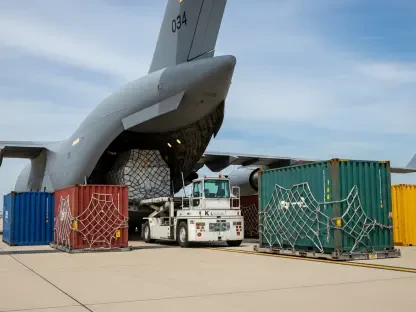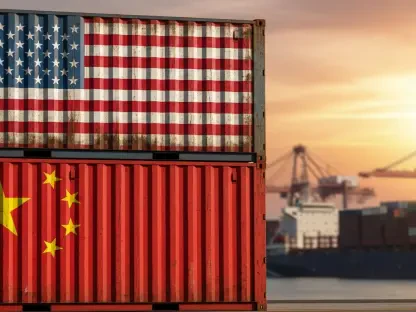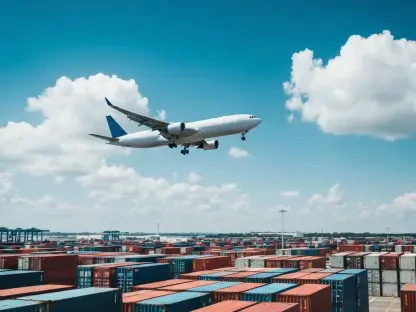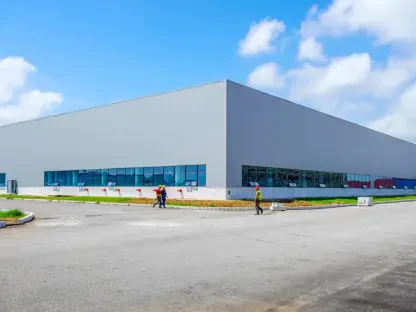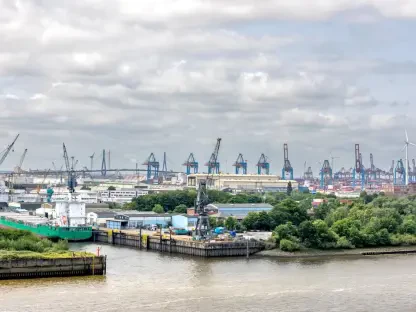In the heart of Europe, Frankfurt Airport (FRA) stands as a titan of global trade, processing vast quantities of cargo that connect continents and fuel economies. Picture a month where the scales tip ever so slightly—a mere 0.1% decline in air cargo throughput, totaling 179.4 metric tons in October, raising a compelling question about the hidden forces shaping the flow of goods through one of the world’s busiest cargo hubs. The answer lies in a complex tapestry of regional trends, holiday disruptions, and policy shifts that demand closer scrutiny.
This story matters because Frankfurt Airport isn’t just a transit point; it’s a critical pulse of international commerce. As a gateway linking Europe to Asia, North America, and beyond, its cargo volumes offer a snapshot of global supply chain health. In an era defined by e-commerce surges and geopolitical uncertainties, even a fractional decline can signal broader challenges or untapped opportunities for businesses, policymakers, and logistics experts. Understanding these numbers reveals how goods move—or stall—in today’s interconnected world.
A Near-Flat Line: Decoding October’s Cargo Figures
At first glance, Frankfurt Airport’s cargo performance in October appears almost unchanged, with a marginal 0.1% drop compared to the previous year. Handling 179.4 metric tons, the airport hovered close to stability, a testament to its resilience amid fluctuating global demand. Yet, this near-flat result masks a deeper story of contrasting forces pulling in different directions.
Behind this subtle decline lie external pressures that briefly disrupted operations. Early in the month, a significant slowdown emerged, driven by factors beyond the airport’s control. While the overall figure suggests balance, it’s clear that recovery in the latter half played a pivotal role in preventing a steeper fall, setting the stage for a closer look at regional dynamics.
Frankfurt’s Cargo as a Global Trade Indicator
Cargo traffic at Frankfurt Airport serves as more than a local metric; it’s a barometer for the health of international trade. As one of Europe’s premier hubs, FRA reflects the ebb and flow of supply chains that span continents, from holiday-driven pauses in Asia to regulatory changes in North America. Its performance often mirrors the state of global economic currents, making it a focal point for analysis.
The importance of these numbers extends to multiple stakeholders. For businesses reliant on timely shipments, even minor dips can disrupt operations, while for policymakers, they highlight areas needing infrastructure or regulatory support. In a world where e-commerce continues to redefine logistics, Frankfurt’s cargo volumes provide critical insights into how goods navigate an increasingly complex landscape.
Regional Highs and Lows: A Closer Look at the Data
Drilling down into October’s cargo trends reveals a patchwork of regional outcomes at Frankfurt Airport. Asia, led by China, emerged as the star performer with a striking 19% surge in traffic, driven by robust imports and exports. Meanwhile, Far East routes contributed a steady 3.7% increase, underscoring the region’s growing importance as a trade lifeline.
However, not all areas shared in the gains. The Middle East saw a 5.3% decline, largely due to reduced freighter capacity with Qatar, while North America edged down by 0.4% on weaker exports to the US and Canada. Latin America dipped by 0.9%, despite a notable 14.2% jump in Mexico traffic, and Africa recorded a 4.1% drop, reflecting smaller but still significant challenges.
Closer to home, intra-Europe routes fell by 2.8%, signaling logistical or demand constraints within the continent. Domestic German traffic, on the other hand, soared by 17.1%, though this was tempered by a sharp 15.7% plunge in connections with Turkey. These disparities paint a vivid picture of uneven global demand and the hurdles facing consistent growth across all markets.
Insights from Fraport: Interpreting the Month’s Results
Fraport, the operator of Frankfurt Airport, provided a measured perspective on October’s cargo performance. According to their analysis, the early-month dip stemmed largely from China’s Golden Week, an eight-day holiday from October 1-8 overlapping with the Mid-Autumn Festival, which temporarily halted key supply chain activities. A robust recovery in the second half of the month, however, helped stabilize the overall figures.
Another factor highlighted by Fraport was the end of the US de minimis exemption, a policy change that redirected e-commerce shipments from China and Hong Kong toward Europe. This shift boosted Frankfurt’s volumes in unexpected ways, offering a silver lining amid other disruptions. Their commentary emphasizes how global events and regulatory adjustments can profoundly influence cargo flows, often in ways that raw data alone cannot capture.
Strategic Lessons for Navigating Frankfurt’s Cargo Landscape
For companies and logistics providers tied to Frankfurt Airport, October’s data delivers valuable lessons. The standout 19% growth in China traffic signals a clear opportunity to prioritize Asian markets, perhaps by expanding capacity or forging stronger partnerships on these high-demand routes. Focusing on such growth engines could yield significant returns in a competitive field.
Addressing weaker regions, like the Middle East with its 5.3% decline or intra-Europe’s 2.8% drop, requires a different approach. Exploring alternative freighter options or optimizing schedules might mitigate losses in these areas. Additionally, building flexibility into operations to weather external shocks—whether holiday disruptions or sudden policy shifts—emerges as a critical strategy for maintaining stability.
Beyond immediate tactics, stakeholders must keep an eye on broader trends. Monitoring how global trade policies evolve, especially concerning e-commerce, could position businesses to adapt swiftly to new opportunities. These insights transform a seemingly minor decline into a roadmap for resilience and strategic growth in an unpredictable market.
Reflecting on October’s Cargo Tale
Looking back, October proved to be a month of delicate balance for Frankfurt Airport, where a slight 0.1% decline in cargo throughput belied the dramatic regional swings beneath the surface. The impressive 19% growth in China traffic stood as a beacon of strength, while declines in the Middle East, North America, and intra-Europe underscored persistent challenges. Recovery after early disruptions, alongside policy-driven shifts in e-commerce flows, helped keep the overall impact minimal.
Moving forward, stakeholders would do well to harness the momentum from Asia while tackling weaker regions with innovative solutions, such as enhanced routing or capacity adjustments. Staying agile in the face of global disruptions—be they holidays or regulatory changes—remains essential. As the logistics world continues to evolve, Frankfurt Airport’s experience in October serves as a reminder to anticipate shifts and seize emerging opportunities with strategic precision.



